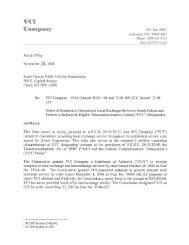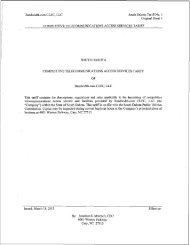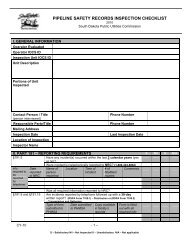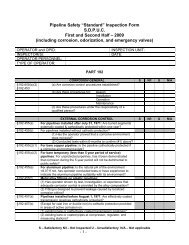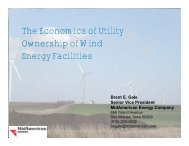Exhibit 1 - South Dakota Public Utilities Commission
Exhibit 1 - South Dakota Public Utilities Commission
Exhibit 1 - South Dakota Public Utilities Commission
Create successful ePaper yourself
Turn your PDF publications into a flip-book with our unique Google optimized e-Paper software.
DOCKET NO. RMU-2009-0009<br />
PAGE 4<br />
to exceed the authorized rate of return and thus the tariffed<br />
rates become unjust and unreasonable at some point. It is<br />
well established that there is a large fixed cost to purchasing<br />
a local switch and that the marginal or incremental cost of<br />
increasing the capacity of a local switch is low (some<br />
contend that it is zero) and certainly less than the average<br />
cost per minute of the local switch. Thus, if the average<br />
revenue per minute remains constant as demand grows, but<br />
the average cost per minute falls (which occurs if the<br />
marginal cost per minute is less than the average cost per<br />
minute) then profits (or return) will rise. This principle is<br />
equally applicable to all LECs. Moreover, the cost of local<br />
switching increases incrementally, while the price for local<br />
switching is established based on average costs, which are<br />
significantly higher. As a result, most of the switch costs are<br />
recovered by the demand used to establish the local<br />
switching rate. Carriers offering tandem switching services<br />
would experience a similar effect for their tandem switching<br />
costs. Accordingly, when local switching demand increases<br />
significantly, a carrier’s increased revenues generally will<br />
exceed any cost increases. As a result, a carriers’ rate of<br />
return at some point is likely to exceed the maximum allowed<br />
rate of return, making the rates unjust and unreasonable.<br />
A similar effect to that associated with local switching would<br />
also occur in the transport segment of the exchange access<br />
network. As demand increases, the number of circuits<br />
needed for transmission will increase. Again, the<br />
incremental cost is lower than the average cost (although the<br />
disparity is likely not as great as in the local switching case),<br />
which would lead to the rates for transport becoming<br />
unreasonable at some point as demand increases.<br />
In the Matter of Establishing Just and Reasonable Rates for Local Exchange<br />
Carriers, WC Docket No. 07-135, "Notice of Proposed Rulemaking" at 14-15 (FCC<br />
October 2, 2007) (hereinafter the FCC Notice).<br />
The system in Iowa is slightly different because the Board does not have rate<br />
regulation jurisdiction over a LEC's intrastate access charges to the same extent as



